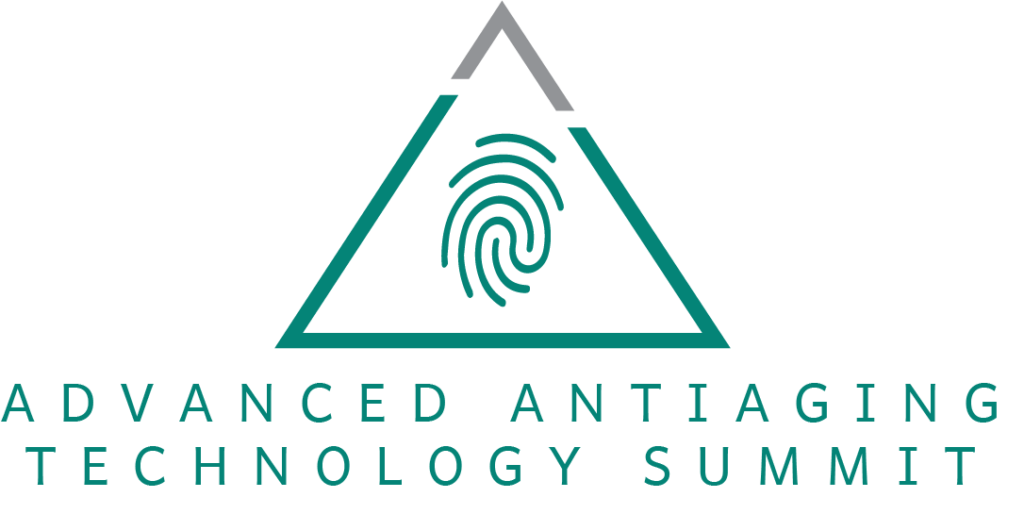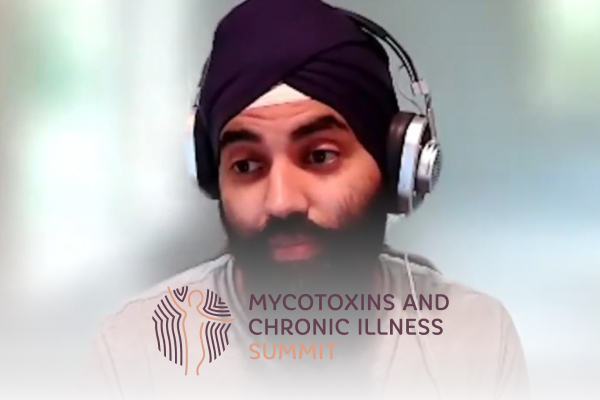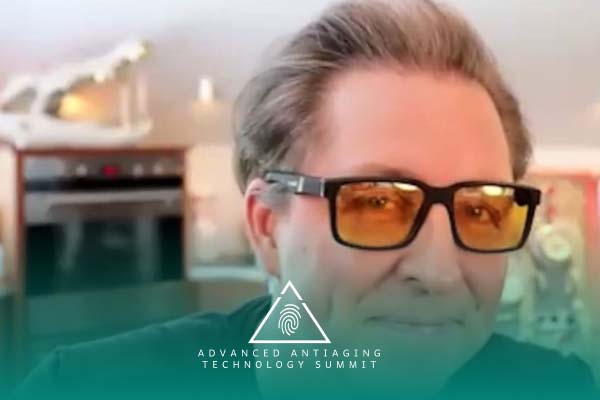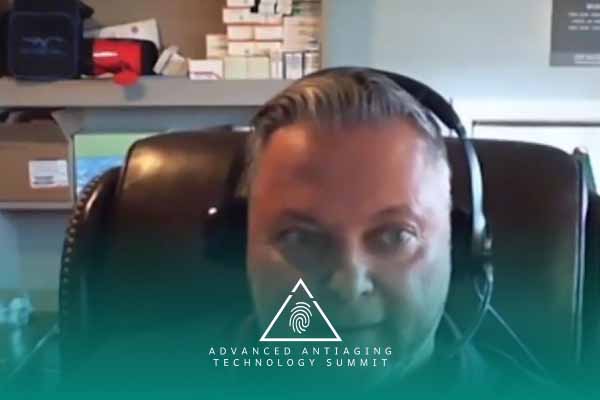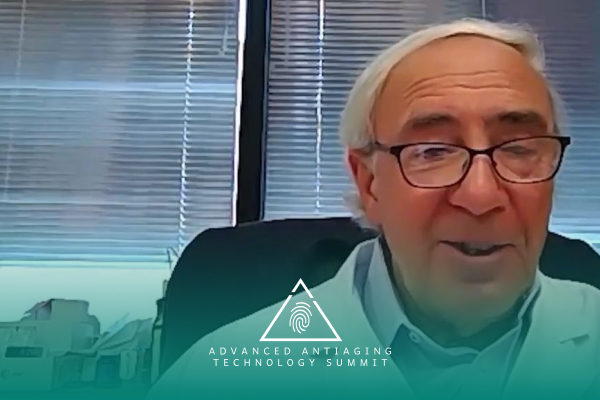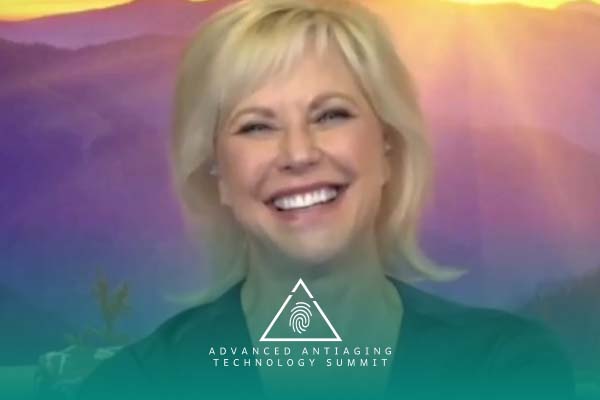Join the discussion below
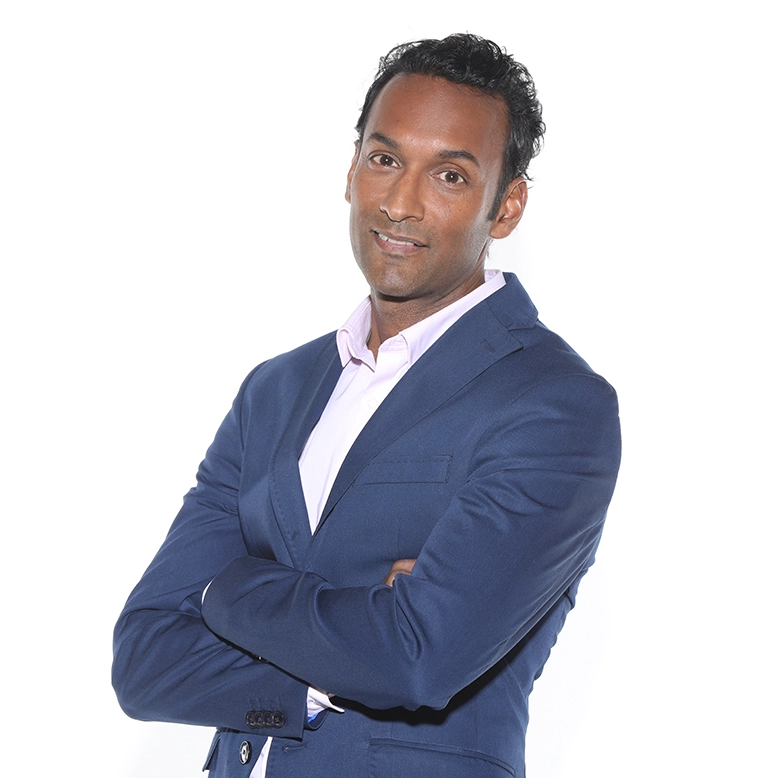
Dr. Goel is a medical physician and founder of Peak Human Labs. His mission is to speak knowledge of the latest cutting edge medical tools and science in order more people to live in a Peak mental, physical and spiritual state. You can learn more about his work at longevity.peakhuman.ca. Read More
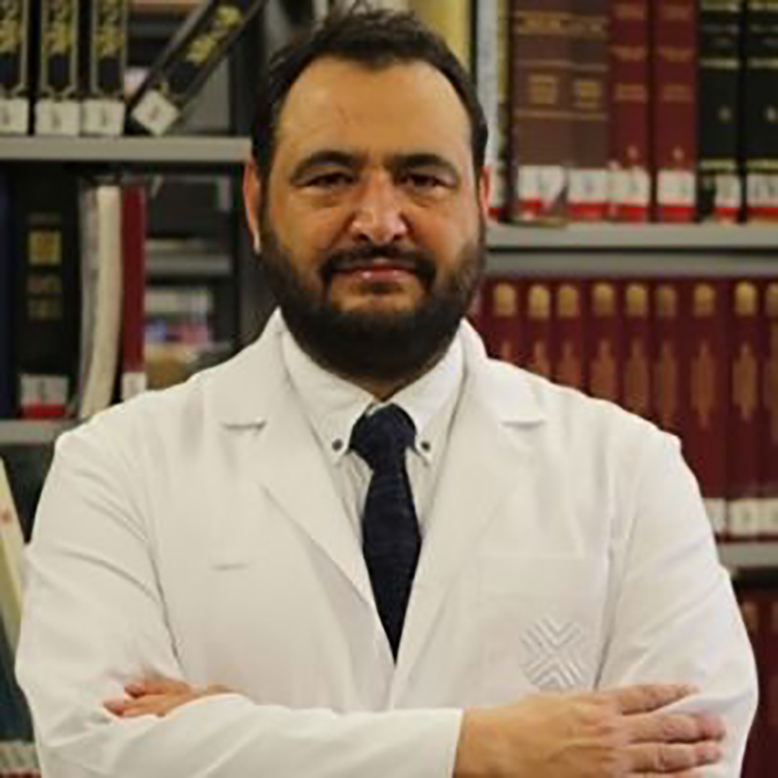
Prof. Dr. Hakan CANGÜL, who is the Executive General Director of Medical Genetic Services provided in Medicana Hospitals, is a Medical Doctor specialised in both Clinical Biochemistry and Medical Genetics. After obtaining his Medical Degree, he completed a PhD in Clinical Biochemistry and then did a second PhD in the... Read More
Sanjeev Goel, MD, FCFP (PC), CAFCI
Hello, I’m Dr. Sanjeev Goel and you’re listening to the Advanced Anti-aging and Technology Summit. Today you’re going to be listening to Dr. Hakan Cangul. Dr. Hakan Cangul is an Executive General Director of Medical Genetics services provided in Medicana Hospitals. He is also Medical Director, specializing in, both, clinical biochemistry and medical genetics. After obtaining his medical degree, he completed a PhD in clinical biochemistry, and then did a second PhD in a field of medical genetics at New York University where he primarily specialized in cancer genetics. He performed his postdoctoral studies in University of Birmingham, UK in the areas of medical and molecular genetics and personalized medicine where he gained that academic degree of Senior Lecturer. Having many scientific awards and a worldwide patent, Dr. Cangul became a full professor in 2014 and worked as a faculty member. He’s also Department Chair and Head of Internal Medicine Services in several universities in Turkey and abroad. Currently apart from his job in Medicana Hospitals, he maintains the post of Academic Head of the Department of Medical Genetics at Brunei University Medical School in Istanbul and honorary member of academic staff in the department of medical genetics and personalized medicine at the University of Birmingham School of Medicine, UK. I hope you enjoy today’s talk with Dr. Cangul.
Hi everyone. I’m Dr. Sanjeev Goel and you’re listening to the Advanced Anti-aging and Technology Summit. Today, I have Dr. Cangul, Hakan Cangul, who’s with me from Istanbul, all the way from across the Atlantic, who’s going to be talking to us about telomeres and aging. Welcome Hakan. How are you?
Hakan Cangul, M.D, Ph.D
Thank you very much. I’m good, Sanjeev. How are you?
Sanjeev Goel, MD, FCFP (PC), CAFCI
Good. Thank you so much for taking the time. I know it’s evening there. I know you have a presentation so why don’t you go ahead and start the screen share and we can go through that.
Hakan Cangul, M.D, Ph.D
Okay. Thank you, Sanjeev. I will start with my background in a little bit and then we can go on with your questions. A little bit of my background. I’m a medical doctor who specialized in two areas of medicine. One is clinical biochemistry and the second is medical genetics. I did my genetics PhD in New York University, USA. I got my academic degree of Senior Lecturer in the Birmingham University, UK. Then, I got back to my home country, Turkey, after 15 years abroad, but still keeping my position at the University of Birmingham. Actually, my son is still there. I’m going back and forth frequently. In genetics, after the Human Genome Project, as you might remember, in 2001 President Clinton first time released the genetic code of human beings, but it was more like unknown meaning of a book, I would say.
I will tell you about human genome. What they did then, they did the sequencing the entire human genome, but at the time it was not known what this information meant Then, studies started on that information, in terms of what genes do in human body, human physiology. I was involved in several studies. We called it gene hunting which is discovering the disease genes because if you discover a gene which mutation’s responsible for a certain disease, then you can understand what that gene does in the body and if that function fails, what goes wrong in the body.
So, these are the lists of genes that we discovered, with our friends and teams, and we published them in “Nature.” At the time, it was much easier to publish in “Nature.” So, when you discover a disease gene and if you can show certain evidence, you are able to publish it in “Nature.” There are a lot of technical details about it, but we are able to discover several disease genes through which case you can identify and recognize all the patients on Earth suffering from those diseases. These are usually diseases of childhood and many of them are quite disturbing neurological diseases. Once you are able to identify the genetic codes, then, today you are able to treat them which was not possible in the past. To do this, you need to get funding in the academy. These are the lists of funding in Europe and in America to do these studies.
Along from my academic work, I was always involved in the clinical side of genetics which is the genetic diagnosis. Starting from ’98, this year completed my third year in genetic diagnosis. I worked in several diagnostic centers in America, the UK, and Turkey. In Turkey, I founded genetic diagnostic lab, recently. So, cut to the chase. People are getting older and older, not only genetics, but several other resources and technological advances, but, usually, after 60 years of age or in developed world, after 80 years of age, people are getting more and more sick. This puts a burden on economic resources, as well. When we are able to identify the mechanisms in aging and health at the molecular level, we can do something about it. Then I come to 4P medicine we call today. Perhaps, Sanjeev, you know about this. I will go into detail in a little bit about what 4P means. This is high resolution medicine, I would say, using all the tools, technological tools, to recognize disease better and treat them better.
If you can recognize better, you can treat it better. Today, maybe you saw this diagram before, in the past, especially in the developing world. You can see the red diagram here. Usually after 60 years of age, health profile goes steep down. Today with the available technology, not only it’s possible to extend that lifespan over a hundred years of age, but also healthy aging. We peak performance of 40, 50 or 60 years of age. You can maintain your life longer and healthier. In the horizon of the science, it is predicted now, it will be possible to see 200 years. It was on the cover of “Time” magazine babies of today, born today, are likely to live 140, 150 years in a healthy state. Biological age is different than the calendar age.
As you know, in biology or medicine, it’s not mathematics. I mean, two plus two always never four in medicine or biology. So, in terms of aging, you see a person who says he’s 40, but he looks 50 or 60 and opposite is possible. Some people surprise you when they say their age. Because the biological age is different than the calendar, calendar is on one side, but our biological aging process is a different issue. Also, there are differences between people, in terms of aging. We are different tendencies, in terms of diseases, risk of diseases, and aging as well. I will go into detail about that.
Aging process is closely related to telomeres. This is a genetic material at the end of our chromosomes which protect our genetic material from degradation. There is a nice analogy here. We can resemble them to the shoe laces. There are plastic caps to protect the shoelaces and, in time, you use your shoes, usually they get degraded. Also, shoelaces start to get degraded without that protection. Telomeres are similar, actually. This is a human chromosome. You can see the yellow beads at the end. These are telomeres protecting the chromosome and the information in the DNA.
But Houston, we got a problem about telomeres because every time cell divides, DNA needs to replicate to give the equal amount of DNA to daughter cells. In each cell division and each DNA replication, this telomere bits are getting shortened. There is a genetic explanation about this, but I will not go into detail. I will just tell this replication mechanism and the enzyme can never replicate the very end of telomeres. It can replicate the rest of the telomere, but not the very end. So, in each cell division, telomeres get shortened and this is directly related to biological aging. I will explain it.
Sanjeev Goel, MD, FCFP (PC), CAFCI
Question there. Does the amount of shortening that happens with each cell division, is that the same for everybody or is that somewhat genetically determined?
Hakan Cangul, M.D, Ph.D
Every time it is same, but the rate is different between the people, the length is the same. I will go into quite technical detail about it, actually, how this enzyme works, why that happens, and I’m sure you will understand it better. I think at this stage it would be better if I show you in the later slides, that will be a much more clear.
Sanjeev Goel, MD, FCFP (PC), CAFCI
Okay.
Hakan Cangul, M.D, Ph.D
For now, I can tell this is directly related to aging of our cells, aging of our organs, and aging of our entire organisms. How central this is, I will show you with the research and the papers. Very prestigious papers I will show you. If I summarize the functional telomeres, these are important for genomic integrity because these bits are not coding DNA. Normal DNA CARs, they called for proteins which do the functions, all the functions, in our body. By the way, Sanjeev, I should tell you at any moment in our bodies, each cell has 10,000 proteins on working. You might think of this: 10,000 workers working in a factory without interrupting each other’s work. This is quite something.
We still don’t understand how this is maintained in one cell and we have about a hundred trillion cells in our bodies. I will get back to that. The second point is these chromosomes can fusion, actually. We have 92 chromosomes. If there is no protection, they can fuse with each other and that would disrupt some functions. For cellular replication, I mentioned this particular, this was the one of the latest presentations I did because of COVID, actually, how telomeres are important in public infection, because telomeres are important for immune cells’ functioning, as well. I can talk about it, if you like it. We call cellular senescence. After certain cell division, cells cannot replicate and divide and go into a state of senescence.
This is very important for aging process. Also, telomeres protect DNA from mutations which is directly relate to cancer. Cancer, we say, is a genetic disease. That doesn’t mean it comes from your family, but in cancer definitely there is damage to DNA in your body and there are mutations in DNA causing the cancer. So, getting to your question a little bit. How much shortens with time and cell division? In the right hand side, you can see the telomere repeats. These are repeats of DNA sequences. As you see, when it comes down to certain lengths in the button, you can see how short the telomere is there.
Cells go into senescence because at that point DNA is under risk to get damaged because protection is disappearing. Cells have a mechanism to sense this and then stop dividing because if it keeps dividing, cancer might occur because, then, DNA will be damaged. So, when there is threat to the code, cell division halts. This guy, we need to remember Leonard Hayflick, discovered this. How many times can a cell divide? He pointed a certain number after 60 doublings, cell can no longer divide because of this mechanism. At the time he didn’t know why this happening, but he measured how many times it divided in a cell culture dish and he found this number.
Sanjeev Goel, MD, FCFP (PC), CAFCI
That means that everybody, every cell can only divide 60 times and
Hakan Cangul, M.D, Ph.D
Yeah, that’s right.
Sanjeev Goel, MD, FCFP (PC), CAFCI
then it’s going to stop dividing?
Hakan Cangul, M.D, Ph.D
No longer, but only cancer cells divide more than that.
Sanjeev Goel, MD, FCFP (PC), CAFCI
They figured out a way to get around this shortening.
Hakan Cangul, M.D, Ph.D
Yeah, yeah. Get away from that mechanism. Very well, Sanjeev. That’s the smartness of cancer cells.
Sanjeev Goel, MD, FCFP (PC), CAFCI
And I guess one other way, I would think if we’re trying to prevent to reach its limit would be to slow down the rate of doubling. Like that would be… I would think
Hakan Cangul, M.D, Ph.D
Absolutely. Absolutely, slowing down the clock. This works like a molecular clock. I’m talking about molecular clock, biology code clock, which is different than the calendar clock or watch clock, if you may. Telomeres shorten by age, in all tissues because in each tissue and each cell in our bodies we have chromosomes that react telomeres. The longest telomeres are, as you might expect, in the fetus because it’s still dividing. The cells, at the beginning, they have the longest telomeres and the longest telomeres are in the sperm which is not a surprise because in every ejaculation, we get like 300 million sperms.
Think of the division of rate. If they didn’t have the long telomeres, they would stop dividing, so we wouldn’t get enough sperms. We start life about 20,000 nucleotides’ length of telomeres, which means, in medical school, you might remember, we have this A-T-C-G letters about the DNA code which are the nucleotides in each unit of DNA. Those are the four letters. Of those four letters, we have 20,000 of them in the beginning of the life, but at the end of life, they get shortened. We are talking about telomeres, like 4,000 letters which is five fold shortening. These people, the great controverters on telomere science. Very well deserved, they got Nobel prize in 2009 with their work on telomeres and telomerase enzyme. Quite relevantly, we came to talk about this enzyme, telomerase. Science never stops.
When they invented telomeres and they invited this enzyme, as you know, again, there is never one way in biology and medicine. If there’s shortening, there is a mechanism to extend it in our bodies. Counter mechanism which is done by this enzyme, telomerase. If you remember, I mentioned, each cell division telomeres shorten, but this enzyme only can counteract that. In adult tissues, the activity of this enzyme turns off. In the fetal tissues, the activity of enzyme is high because cells need to divide. When you get to the adult tissue you don’t need more cell division and that activity of the enzyme is reduced. This is, again, another complex genetic mechanism how the genes are turned on and off. I’m not gonna go into detail about this, but shortly I can tell in every gene there are actuators and inhibitors for the need of the cell. Inhibitors counter an effect, if you don’t need that function anymore. If you need that function, you’ve got activators which turn on the genes.
Sanjeev Goel, MD, FCFP (PC), CAFCI
Telomerase, it stabilizes the telomere or lengthens the telomere?
Hakan Cangul, M.D, Ph.D
Yeah. Yeah. Here, you see the end of telomere sequence, actually. Those nucleotides, I mentioned, the beauty and the function of this gene has a template for that end of chromosome because normally it cannot replicate this enzyme. There is no template to replicate the end of the chromosome, but this enzyme has a sub unit which provides a template to extend the very end of telomeres. This is what it does. This is like a molecular mulcher that extends the ends of telomeres. Those people who discovered this enzyme, it was not known before. Telomeres started from Hayflick from ’60s, but telomerase enzyme recognized the first time by these people. There was a new era after that because it opened up a lot of new opportunities.
Sanjeev Goel, MD, FCFP (PC), CAFCI
So this reverse transcriptase, the hTERC and the hTERT, these are components of the telomerase enzyme?
Hakan Cangul, M.D, Ph.D
That’s Right. Reverse transcriptase uses RNA template. That’s why it’s a reverse, it’s called. It is able to synthesize DNA from RNA template and because it’s an enzyme called reverse transcriptase. One of the advances after it this… You know the Hayflick limit? 60 times. You can translate to the human life or any living organism has a maximum lifespan. Ours is 120, 25 years. People in Himalayas or Japan, some people live up to that age, but it was known that that’s the maximum a human being can live. It changed now because there is no limit, actually. You can extend it. So, Hayflick limit was true at the time, if you don’t do any intervention, but we know that 60 is not a limit. So, 120 is not a limit for a lifetime.
Let me get back to this and this is a groundbreaking study published in “Nature”, 2011. In one study, they show it is possible, biologically, to take the time forward and take it back reverse on mice. Let me show you the mice here. The top one is genetically modified and only one mechanism telomerase enzyme is turned off. Normally, a mouse lives like three, four years. When you turned off the telomerase, this mouse at the age of six months, looked like three, four years of age and show all the signs of aging.
The hair got gray, immune system, reduced activity, atrophies, cancer incidents in this strain is higher, but the smartness of the study, they did it temporarily turning off the telomerase. In the same strain, they were able to reactivate, telomerase, and that makes the mouse younger, again, just by extending their telomeres. Just one mechanism. In biology, there are several mechanisms in one process. I showed this slide to explain how telomeres are central in the aging process. Without a doubt, they were able to show this and “Nature” published a study and it opened a new era in terms of anti-aging, genetics, telomeres. Then, I will go on after this. Any questions, Sanjeev?
Sanjeev Goel, MD, FCFP (PC), CAFCI
No, that’s very exciting. I have a question about… This looks like a study where they deactivated the telomerase and then reactivated it to back to physiological normal level, but I’m curious now. I think you’re gonna be talking about supra normal telomerase, if that’s possible. Can we change the telomerase to what’s…?
Hakan Cangul, M.D, Ph.D
Yeah. That’s what we’re going to talk about. This is what TA 65 is all about, actually. That’s what it does, but this study is very important. I can show you, send you the papers. I’ve got all the papers and this is very well-proven and nothing against it.
Sanjeev Goel, MD, FCFP (PC), CAFCI
Cause it is groundbreaking
Hakan Cangul, M.D, Ph.D
Groundbreaking. Absolutely. This is like turning off the time and putting back on. I mean, that’s crazy. If somebody told me this 10 years ago, I didn’t believe it. When the telomerase gene is activated, every gene has a regulatory side we call promoter and in our reproductive cells, as I told, in sperms this promoter is active. That’s why Telomerase gene works and produce telomerase enzyme, but when we get older, it’s repressed by a repressor so that it slows down the activation of the gene. There are several factors, as I told you, in biology. There are pro mechanisms and anti mechanisms, in terms of telomere length. Like proliferative activity, oxidative stress, inflammation they all caused by: infections, tissue injury, toxins, stress they’re all have an effect on this.
If you have Telomerase on the other side of the balance with which you can modify these with your lifestyle, diet, stress reduction, supplements… Today, which we’re gonna talk about. So there are the genetic and environmental factors which we are not have always an effect on them, but there are lifestyle factors which can modify and we can do something good for our telomeres. If you talk about what happens when telomeres shorten and why do we care about this, in terms of that’s the laboratory, but we come into real life, now. What happens to people’s life? Short telomeres are involved in all diseases because it’s related to cells’ function. It’s one of the root causes of every disease. I will tell you in a bit.
If you don’t know this mechanism, actually, you are short of, epically short of treating every disease because telomeres are in every cell. Telomeres are shortening in every cell and organs in our body. If you don’t do something about this, you might be missing something. You are doing something good in somewhere, but if you are missing this, you might be missing the health effect you can get. “New England Journal of Medicine” approached this issue, again, 2009, telomeres are always involved, especially in diseases of late onset, later in life. This is going to COVID. I might roll pass quickly here. Showing why important. This is about immunity, actually. So if you allow me, I will just go pass. We’ll get back to this. What we can do to lengthen in our telomeres. Because if you discover a mechanism, so there is a mechanism we call awareness or mindfulness, they call it now. If you know that there are telomeres in your body and these are doing something when the function is going down, you might like to do something about it.
Awareness is important. That’s what we are trying to arise in people, if you may, during this talks and our scientific work, as well. So lifestyle, I mentioned, stress is a real factor in terms of telomere attrition and telomeric damage. Exercise is strong to be having good effect on telomeres. Weight loss, and low calorie diet, we definitely know reduces telomere damage. While friction, and smoking, like in everything. Diet, Omega-3 is important for telomeres which is a common supplement nowadays. I don’t know the situation in Canada or America. Are people using Omega there, Sanjeev?
Sanjeev Goel, MD, FCFP (PC), CAFCI
Yeah, yeah. It’s definitely recommended yet to most patients to take.
Hakan Cangul, M.D, Ph.D
Yeah. Yeah. It’s important for silent inflammation, the reducing the silent inflammation, which is important in of every diseases and late onset diseases also in terms of telomeres,
as well. It has a good effect.
Sanjeev Goel, MD, FCFP (PC), CAFCI
Can I ask you a question on, I know just before we get to supplements, so exercise, if you could tell us that. I mean, I would think that potentially too much exercise could potentially increase telomere shortening.
Hakan Cangul, M.D, Ph.D
That’s right.
Sanjeev Goel, MD, FCFP (PC), CAFCI
So what does this study look at?
Hakan Cangul, M.D, Ph.D
That’s very good point. Telomere science tells you excessive exercise is not good for you because it increases a reactive oxygen species which are very damaging to DNA and telomeres.
Sanjeev Goel, MD, FCFP (PC), CAFCI
Right.
Hakan Cangul, M.D, Ph.D
So moderate exercise.
Sanjeev Goel, MD, FCFP (PC), CAFCI
You mentioned weight loss and low fat intake. I know we’ve had a couple of speakers talk about ketogenic diets, fasting. So what’s the exact mechanism of the diet on the telomeres?
Hakan Cangul, M.D, Ph.D
Low calorie, again, the same mechanism. Reducing the reactive oxygen species. The more calorie you get, your mitochondria will be working like crazy and they will release cytotoxic metabolites, which will damage to your telomeres.
Sanjeev Goel, MD, FCFP (PC), CAFCI
So the low fat intake is more about low calorie. Is it? Can one have a high-fat ketogenic diet?
Hakan Cangul, M.D, Ph.D
I’m not dietician, but in terms of diet I should tell you, there is no magical diet. For example, in Turkey ketogenic diet is very popular, now. Everybody’s using the ketogenic diet, but it doesn’t work in every people in the same way because people are different and there are genetics of metabolism. So, we got Nutrigenetic tests which diets could be more suited to your genes. This is like, it was popular Atkins’s diet, protein diet. We got tons of diet, but it doesn’t work. If it works, people didn’t need to do it because this is like a one side sweat and trying to put on every people. So it doesn’t work. But genetics, Nutrigenetics, provides the information personalized. That’s the one P of 4P, actually, personalized regimes. Our diets are important for you and we are doing Nutrigenetic test which diet would be more suited to your genes, to your metabolism. And you can wear it like a custom-made suit. That is proven four times effective. If you use Nutrigenetic tests before going into particular diets.
Sanjeev Goel, MD, FCFP (PC), CAFCI
Okay. Thank you. That’s great.
Hakan Cangul, M.D, Ph.D
Supplements. I was saying vitamin D is, even though we are a very sunny country, because of enzyme polymorphism, we use Vitamin D, here. I don’t know what’s this duration. It’s important for immunity as is involved. Vitamin D is very, very popular and I think it’s working. Hormones. If you have hormone replacement therapy for menopause. The woman, I can tell the preparations are much better and they can also prescribe to your to your metabolism, now. Even it’s possible to order the best suited hormone replacement for yourself. If you come to the TA 65, here, that’s the specific I’m gonna tell you what it is about. This is plant, actually. The plant extracts, which is used in Chinese medicine more than 2000 years now. It’s called astragalus membranaceous. It’s used for healing in the Chinese medicine. Today, we know how it works on telomeres. The active module is Cycloastragenol, it’s called.
It activates the telomeres gene, actually. The extracts, now, you can measure in units because if you try to consume the plant you need to eat tons and tons of them. When they extract in a correct and protected mechanism, in a capsule, you can also measure the unit of activity and you can use it properly. How it works, as I told you, in adult tissues, the gene is turned off by a repressor which binds to the promoter gene regulatory elements of DNA, but anti-aging product is binding to that repressor protecting it’s repressor effect. So it neutralizes, if you may, in that sense. It’s the first commercially available, and which we have the most data about it clinical data and the laboratory data. Transient activated telomeres, which I will talk about in a bit because telomerase most people will ask you this question. Actually, we can talk about it because in cancer cells telomerase is activated, as well.
This is the way as we are taught before cancer cells, avoid the stop dividing issue. They activate telomerase, but the activation in cancer is much more altitude. It’s like endless activation, continuous activation and that step, the only mechanism to turn a cell into a cancer cell. There are other mechanisms and I’m going to talk about why TA 65 doesn’t cause cancer in a bit. This is regulatory stuff for food supplements. You need to get this certification as safe and it was done in America. This is, again, the effect of TA 65 on immune cells on why it’s good for COVID infections as well. I will go pass quickly.
How effective is TA 65? And what happens if we didn’t take any supplements or we didn’t do any, the good things about telomeres like other life-changing modifications. On the left-hand side, you see the TA 65 and the right-hand side placebo group. And they used three month, six months, nine months and 12 months, and they measure the telomeres, average telomere length in people. If you didn’t take any supplements or if you didn’t change your lifestyle, in one year, you will lose about 300 base from your telomeres. When you use the TA 65, you gain 500. So there is almost eight hundred base difference, in terms of telomeres.
Sanjeev Goel, MD, FCFP (PC), CAFCI
I just a question about that. I have a quick question. So I guess, maybe this slide addresses it, but over a long-term would one just expect to continuously increase these base pairs every year.
Hakan Cangul, M.D, Ph.D
This slide is all about that, Sanjeev, very well located and timed to your question. Usually we use a few years and then we check it with the telomere measurements, how useful because people have different metabolism. They metabolize the TA 65 in different ways, as well. We don’t get the same effect in every people. So, we go with telomere measurements, how beneficial, in what dose, how many years we need to use. We can estimate there is no ready-to-use formulation because still this is in use, but we are able to use it in safe limits. Here is a patient, actual patient. When she started using TA 65 she was 62 years old and she used 500 units daily. Her biological age, by the way, which is in the blue diagram, which was already good to her calender age. She was lucky, in terms of telomere length.
Still, it was effective on her. At least it stabilized the shortening in this lady. In five years at the end, if you see telomere length, she didn’t lose. After five years, she got to 77 years old there. Oh, sorry. It is 67 years old, but her telomere length, biological age, was still under 50. She was feeling this energetically, immune system, all parameters. This is the main version of it. Similar results for four years of usage, 500 subjects here. Especially, again, for effect on the immune system. They use four different regimens in the study. They compared it to a placebo and those effects was able to be established by the study.
They used several biomarkers to show the effects. It was published in “Journal of Immunology” in 2008. It showed… I’m not gonna go into detail, but at cellular level, they showed it improved the immune profile because immune cells go into senescence by age. Our immune profile is declining that’s why we see cancer in older people more frequently because a body is not able to defend itself against cancer as well. White blood cell, immune cell, function how improved. These are parameters of cytotoxic, natural killer cells. All parameters are there. The convolution of the paper, that in terms of immunity, people got a more youthful profile, in terms of immune profile. These are, again, the same study. As I said, these are too much detail. Studies are more than 12 years on TA 65, now.
First, it started in ’90s in a biotech company, Geron, in California. Then they license got to this TA sciences in New York and they produced it commercially. It’s used by people in America since 2007. More than 10,000 people are currently using. There is no side effect or any higher cancer instances. Nothing. It is safe. It doesn’t harm you, but people get different benefits from it which we can check by the telomere measurements. If you’re not getting enough benefit you don’t need to because there is a cost to it. You don’t need to take it. You need to do other life modifying. Let me get into this life-changing. How TA recommendations are given to all people more exercise, less alcohol, no smoking, and low calorie carbohydrates, all that, or regularly lifestyle enough sleep and less stress.
It’s not possible for every people to do all those. I’m saying to my clients, the supplements are there for the things that you cannot do, but if that supplement doesn’t work for you, you need to do the something, even change your job if it’s so stressful. So, you need to do something. TA 65 is not only, but it’s helping for us. The people, for example, I have as clients, she’s a top weight magazine person. She needs go into parties late at night. How can I tell her go to sleep? She cannot do her job. So I’m telling to her, do everything else. You cannot change this. You cannot get enough sleep, but you got supplements to help you. That doesn’t need to put into people into relaxation, but we need to give people hope, as well, especially in Turkey. People are more casual about this in the West. I’m sure in Canada. I know England. I know New York, but in Turkey, people are much more relaxed about lifestyle issues. They’re getting more mindful about that, as well.
Sanjeev Goel, MD, FCFP (PC), CAFCI
I have a couple of questions.
Hakan Cangul, M.D, Ph.D
Sure.
Sanjeev Goel, MD, FCFP (PC), CAFCI
With a couple of minutes, I want to make sure…
Hakan Cangul, M.D, Ph.D
That’s the end of the talk, actually. Yeah.
Sanjeev Goel, MD, FCFP (PC), CAFCI
I have a couple of questions before we end. So if somebody is doing very well, like exercising, would TA 65 still add added benefits? Because in this case, it looks like
Hakan Cangul, M.D, Ph.D
Definitely.
Sanjeev Goel, MD, FCFP (PC), CAFCI
From that graph that is that basically stopping aging.
Hakan Cangul, M.D, Ph.D
Lifestyle changes… I showed the effect like 500 extension. You wouldn’t get extension with only exercise. You can slow down the losing bit, but extra bits you need telomerase activation. For the modifying factors, you can slow down the process, but TA 65, you can even reverse the process.
Sanjeev Goel, MD, FCFP (PC), CAFCI
So people are noticing. Are they noticing physical signs of improvement by taking a supplement like improved skin or eyesight?
Hakan Cangul, M.D, Ph.D
Eyesight, definitely.
Sanjeev Goel, MD, FCFP (PC), CAFCI
What are your clients noticing?
Hakan Cangul, M.D, Ph.D
That’s one of the early signs. We see our clients shortsightedness about three months. If they’re going to benefit about it depending on their metabolism, it shows the effect in three months. Almost always from the start, people feel better. Part of that could be a placebo, but it’s sustainable. People feel better in terms of energy. They feel more energetic. If it works for them, they definitely feel it. It’s not placebo.
Sanjeev Goel, MD, FCFP (PC), CAFCI
Right. The dosage I see you have is 500. I guess the studies showed that that was kind of the best value for money? I guess one could take 250 to 1000 I understand.
Hakan Cangul, M.D, Ph.D
Again, for the starting point we need do the measurement how good a life brought that particular person, in terms of telomere length, which is dependent on his, her genetics, also environmental factors. How bad the environmental effects there. So before starting, I always measure. People can use this. That’s what most people do. For every client of mine, I definitely measure their telomeres and then decide what to do the dose, how many daily usage for how long, and I do intermittent testing to see the effect so that I can show you, the person, her immune profile is improving. I’m not doing just phone-in telomere. I’m showing you’re immune profile was this where we started. After that, I have an evidence to show that it doesn’t depend just on the feelings of people. I need to show evidence.
Sanjeev Goel, MD, FCFP (PC), CAFCI
Okay, perfect. With regards to testing of telomere, which company do you use if somebody wants to get their telomeres tested?
Hakan Cangul, M.D, Ph.D
There is a company in Spain, LifeLink. That’s what we use because it’s FDA approved. Still, I believe, the only one FDA approved telomere measurements which could be done everywhere. It’s not rocket science, but the know-how and the information because they did from the very beginning, they have a lot of data to compare people between chronological age and biological age. That’s why I’m using them. They have very wide database, in terms of giving you the correct estimation.
Sanjeev Goel, MD, FCFP (PC), CAFCI
There was a groundbreaking study that just came out about telomeres, the Israeli researchers, and the use of hyperbaric oxygen chambers which showed a lengthening of telomeres. Do you want to comment on that? What’s your thoughts?
Hakan Cangul, M.D, Ph.D
Sorry, Sanjeev. I didn’t have a chance. I know the study, but I cannot give you details about it. I was not able to read it throughout.
Sanjeev Goel, MD, FCFP (PC), CAFCI
No problem. Thank you. I think this is great. This is a big help for our viewers. So just a little reminder that TA 65 is the name of the supplement and telomeres are the mechanism by which aging is happening.
Hakan Cangul, M.D, Ph.D
We can say central to our aging process and a mechanism to get diseases at elderly age. That would be the message, I would say.
Sanjeev Goel, MD, FCFP (PC), CAFCI
Thank you so much. I really appreciate your time today.
Hakan Cangul, M.D, Ph.D
Thank you very much. Very nice to meet you.
Sanjeev Goel, MD, FCFP (PC), CAFCI
All right. Have a good day. Take care.
Hakan Cangul, M.D, Ph.D
All the best.
Downloads
